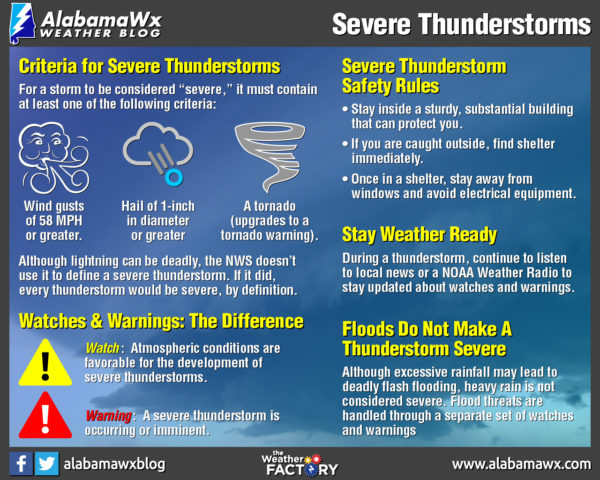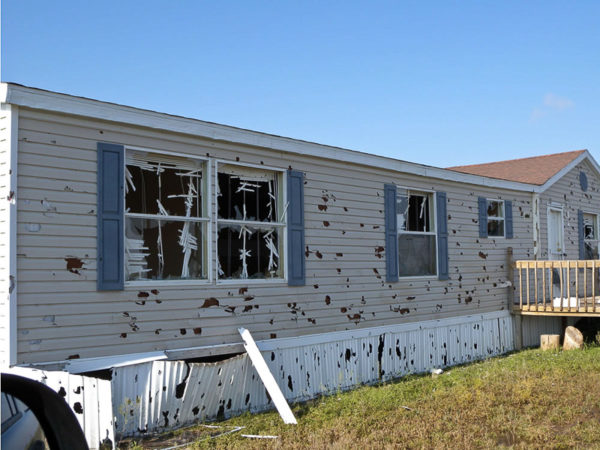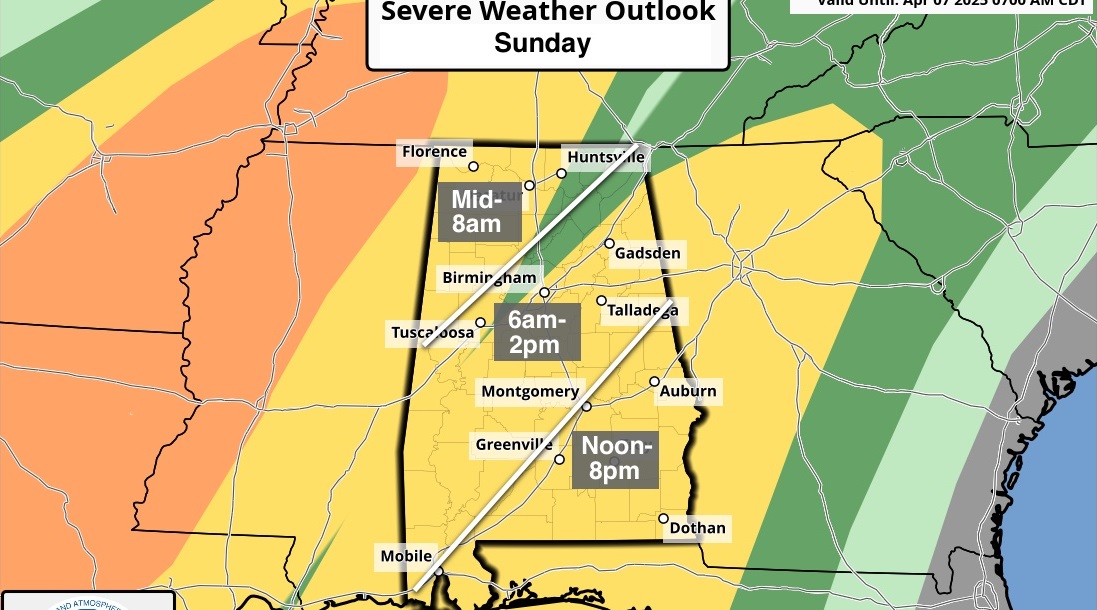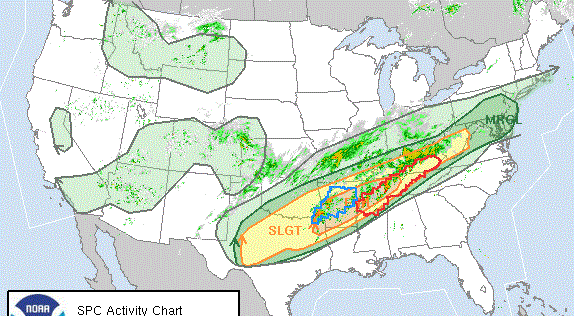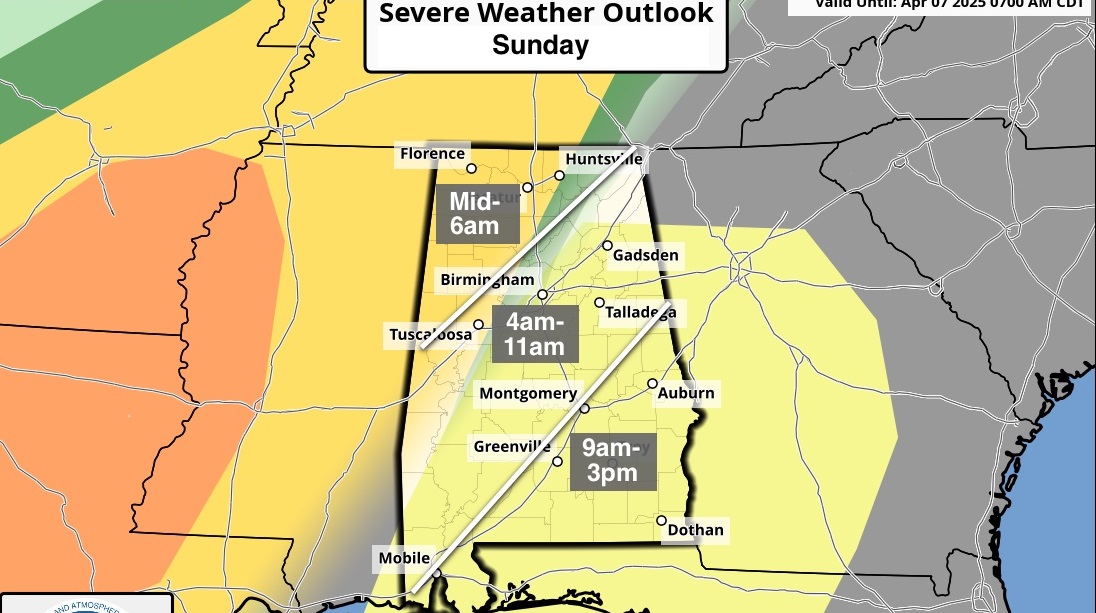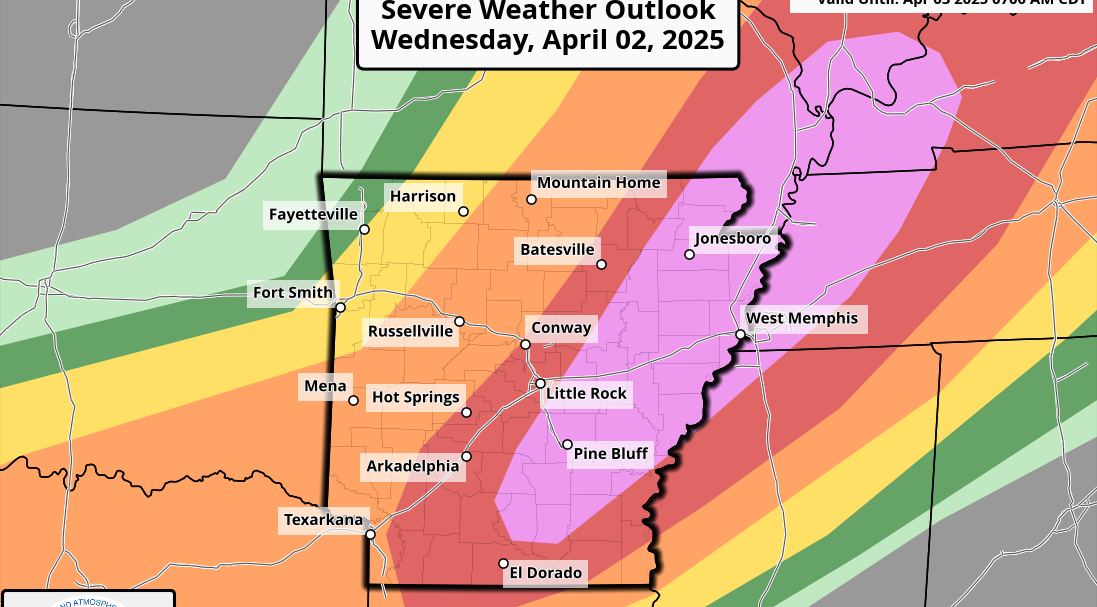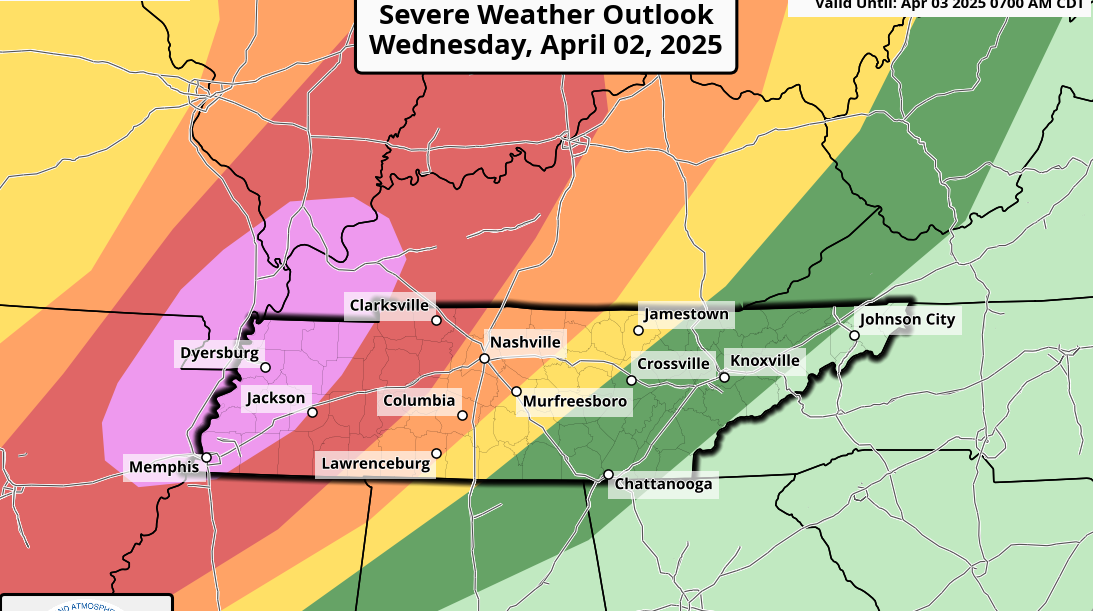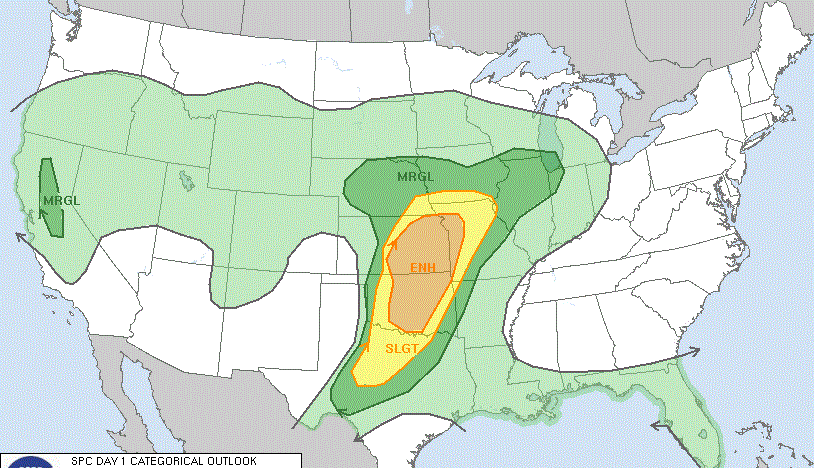Severe Weather Awareness Week: Severe thunderstorms

Thunderstorms are a familiar occurrence in Alabama. Birmingham averages 57 thunderstorm days a year. Mobile averages 79 thunderstorm days. Many find storms to be interesting and even thrilling, but they are dangerous creatures that deserve our respect.
By definition, thunderstorms contain lightning, the underrated killer. Thunderstorms also produce damaging winds, hail, flooding and tornadoes. For a storm to be considered “severe,” it must contain at least one of the following criteria:
- Wind gusts of 58 mph or greater.
- Hail of 1 inch in diameter or greater.
- A tornado.
Although lightning can be deadly, the National Weather Service doesn’t use it to define a severe thunderstorm. If it did, every thunderstorm would be severe, by definition. Also, while excessive rainfall may lead to deadly flash flooding, heavy rain is not considered severe. Flood threats are handled through a separate set of watches and warnings from the NWS.
One event that can cause damage and injuries during severe thunderstorms is straight-line winds. Damaging winds occur much more frequently than tornadoes and can be just as damaging. They can exceed 100 mph. Trees and power lines can be knocked down, mobile homes can be overturned and well-built homes and buildings damaged.
Another event that can cause damage and injuries during severe thunderstorms is hail. Hail is most common in the spring in Alabama, when atmospheric conditions make it most likely that the ice can reach the ground. Hail can cause severe damage to automobiles and even to buildings, damaging roofs and windows. Hail injuries are rare but do happen. Hail can also kill people, as happened on March 28, 2000, when a man in Fort Worth, Texas, was struck by a baseball-sized hailstone. There have been five recorded hail fatalities in U.S. history. So while it is not a frequent killer, it can be deadly. To be safe, just don’t get caught outside in a thunderstorm.
Tornadoes are another event that can happen during severe thunderstorms. We’ll cover tornadoes in a future severe weather awareness post.
The primary safety rule for dealing with thunderstorms is to be in a well-built structure, away from windows. This will protect you from the hail and non-tornadic winds. If you are caught outside, find shelter immediately.
See James Spann’s shopping list of must-have items for your severe weather safety kit.
For more weather news and information from James Spann, Scott Martin and other members of the James Spann team, visit AlabamaWx.
